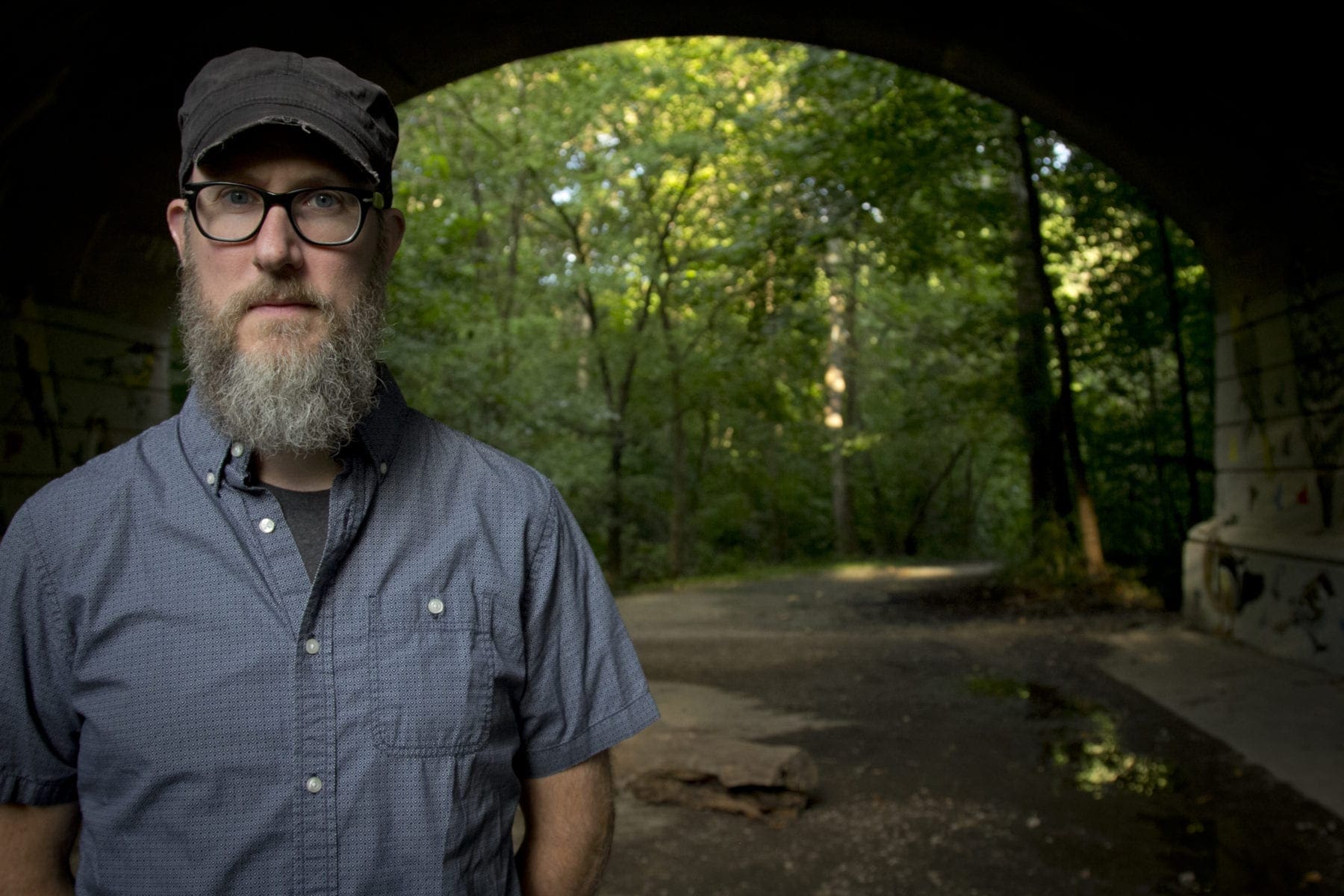


Brian Harnetty mines Appalachia’s past with a singular aim: to salvage stories from one of the country’s most neglected regions and make them resonate. Raised by descendants of Welsh immigrants lured to the Midwest by mining prospects, Harnetty attended London’s Royal Academy of Music, where he pondered how new music might reflect the heritage of its composer. Back in Appalachia, that quest has become his muse, as he shapes archival recordings of miners, farmers, musicians, and townspeople into pieces that give old tales of hardscrabble existence new poignancy.
Co-commissioned by Duke Performances and performed on October 26 and 27, 2018 at the Rubenstein Arts Center, Shawnee, Ohio is the pinnacle of Harnetty’s process and his most affecting, personal work yet.
Harnetty’s ancestors arrived in the booming Shawnee in 1873; as with many of Appalachia’s fabled “Little Cities of Black Diamonds,” the collapse of coal-mining left only a skeletal town and environmental ruin. Harnetty immersed himself in the place’s lore, interviewing residents and descendants, excavating community archives, and recording the surrounding forest. In eleven exquisite vignettes, Shawnee, Ohio turns videos, voices, and photographs into one town’s living portrait. Rendered by a top-tier ensemble of the region’s folk and classical musicians, Shawnee, Ohio reckons with our history while looking to the future.
“One comes away wanting all of history to be accompanied by a live score.”
Columbus Monthly
Shawnee, Ohio is a portrait of a town, both real and imagined. I first came to Shawnee in 2010. My father grew up in nearby Junction City, and we went there often as a family, but I had never been to Shawnee before. My mother’s ancestors arrived in Shawnee on August 4, 1872. They were part of a large migration of Welsh coal miners to the region. Sometime after graduating from high school in 1925, my grandfather Mordecai Williams moved away. The whole family moved, caught between a regional mining bust that would never recover and the Great Depression yet to come.
I began visiting Shawnee and neighboring towns regularly. I got to know some of the people that lived and worked there. Since I am an outsider, I relied on these relationships, and am deeply indebted to those who talked with me. I did research in the Shawnee archive. I also made sound recordings of my own. Over the next six years, I continued to return. Slowly, past and present got mixed up, bled into one another. Two stories emerged: one of the region and one of my family ties to it.
Shawnee, Ohio gets its material from these visits. While working in the archive, I asked a local historian if there were any sound recordings. Rummaging through a closet in his office, he produced a box of about 40 cassette tapes. They were mostly recorded by him in the 1980s and 90s. The tapes contain oral histories of a generation of people now gone. On these tapes I hear memory, laughter, embarrassment, music, forgetting, sorrow, friendship. I hear about everyday events — births, relationships, work, deaths — directly and without mediation. The people speak in their own voices, unrehearsed. They were not famous or wealthy. Their agenda was to share, to remember, to learn, and to find ways to move forward. The recordings were made in the same buildings and towns where their stories took place.
Because there are so few early regional recordings, I turned to those made by Anne Grimes in the 1950s. Grimes recorded all over Ohio, and was equally well known as a singer and dulcimer player. Her detailed notes revealed a handful of recordings from the Little Cities of Black Diamonds, from towns such as Nelsonville, Murray City, Glouster, and Gore. While they are not directly from Shawnee, the recordings fit in with the spirit and tenor of the region. They include murder ballads, labor songs, and hymns. They uncover a rich and complex musical past that is often overlooked.
Shawnee, Ohio is centered on eleven portraits. In words and song, these people recount their lives, work, and deeds. They include women and men across generations. My observations are present, too, as I imagine my grandfather’s life as a young man in Shawnee. At the same time, other subjects are at play: mining and extraction, buildings, disasters, environmental destruction and recovery, parades, protest, and hope. They are buried, growing underground, ever-present in the minds of those who live here. They are tangled with the portraits — in music, voice, photos, and writing — and can’t be easily or meaningfully separated.
— Brian Harnetty
ENSEMBLE
Brian Harnetty, piano/electronics
Tyler J. Borden, cello
Aaron Michael Butler, vibraphone
James Farley, viola
Liz Fisher, violin
Katie Porter, bass clarinet
Jordan Reed, saxophone
Anna Roberts-Gevalt, banjo/violin
Shawnee, Ohio by Brian Harnetty was co-commissioned by the Wexner Center for the Arts at The Ohio State University; Duke Performances at Duke University; and the Contemporary Arts Center, Cincinnati. Shawnee, Ohio is a project of Creative Capital.
Archival photographs are used courtesy of the Little Cities of Black Diamonds Archive. Archival film is used courtesy of Jack Shuttleworth. Contemporary photographs and video are used courtesy of Jon Johnson. Recordings from the Anne Grimes Collection are used with permission from the Grimes Family and the Library of Congress.